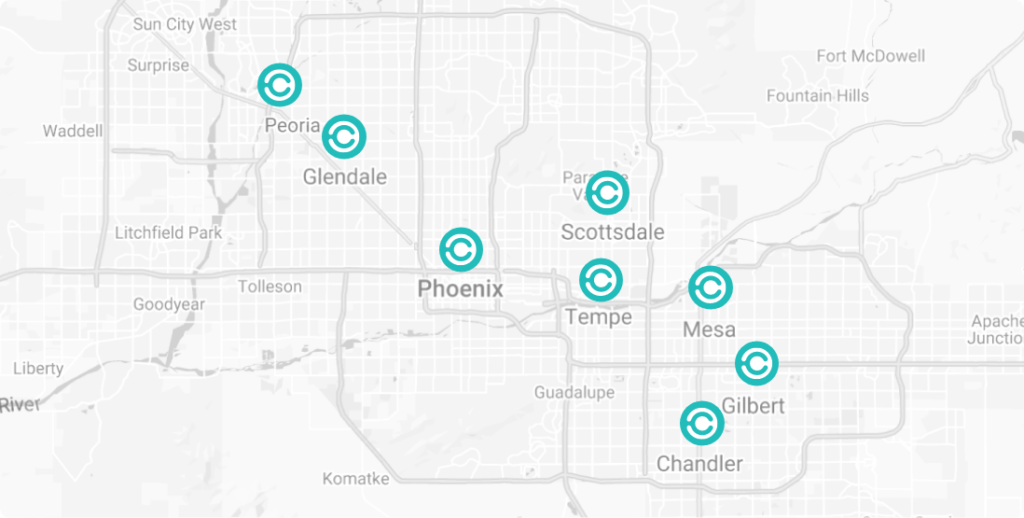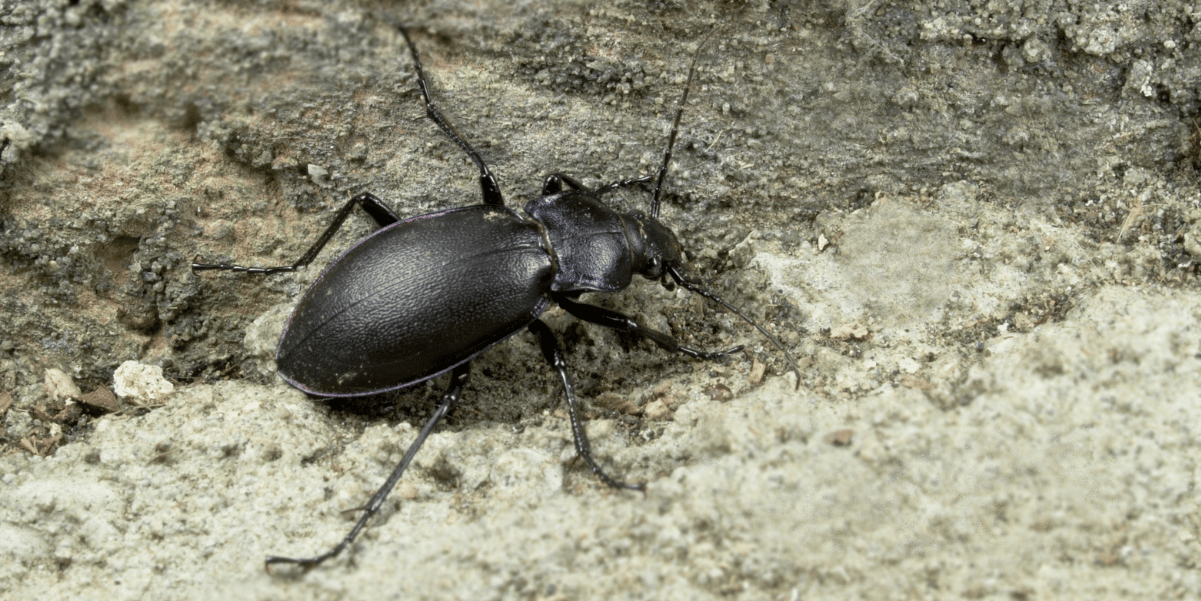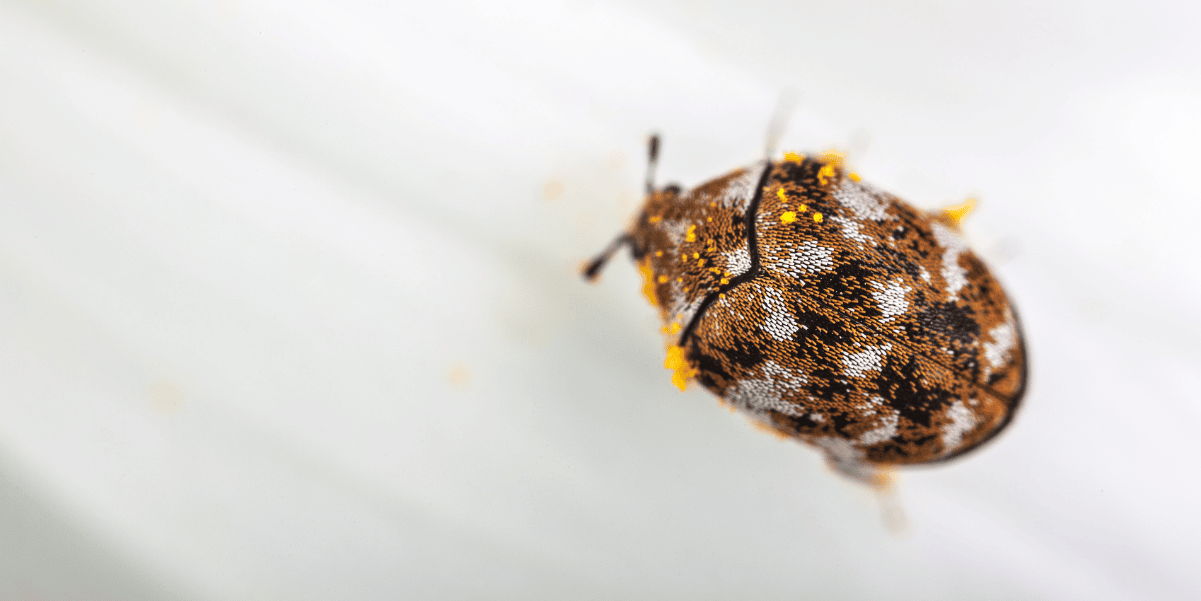
Beetle Pest Control in Phoenix, Arizona
Beetles in Arizona
Beetles, or Coleoptera, create the largest order in the animal kingdom. There are nearly 30,000 beetle species in the United States alone. Their shapes and sizes can differ significantly; some species even resemble spiders! These creatures can be found anywhere across the globe in warmer climates, and here in the Valley, we have a handful of beetles you’re likely to encounter crawling through your home.
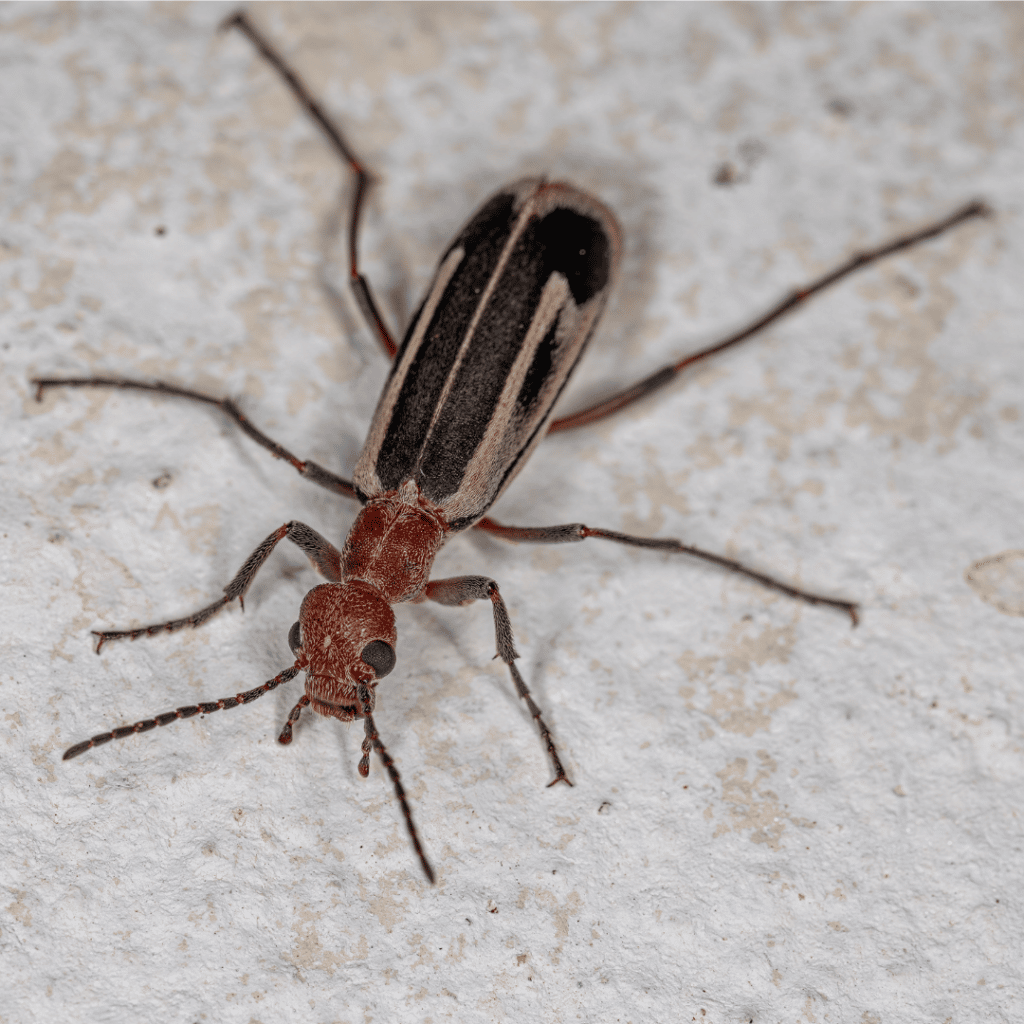
Arizona’s Most Popular Beetles
Blister Beetle
Blister beetles live all over Arizona, named after the harmful effects they can cause to your skin on contact. As part of the Meloidae family, they breed during the summer.
Identification: These guys can be identified by their spotted leather body, a fold on their back, and beaded antennae. While their colors vary, some exhibit bright yellows and reds, indicating poison. Apart from this, the majority have a black and gray appearance.
Risk: Blister beetles, as mentioned above, can irritate your skin. They release a blistering toxic agent called cantharid. While the skin reaction is painful, it isn’t life-threatening, nor does it cause any permanent damage.
Carpet Beetle
Carpet beetles are part of the Dermestids family. They lay their eggs in fibrous materials such as synthetic and animal fibers found in carpets and other furniture to allow their offspring to feed, thus gaining the name “carpet” beetle.
Identification: Carpet beetles are tiny, oval-shaped insects with six legs and two antennae. The larvae have a fuzzy appearance with a worm-like shape. Coloring can range from a dark brownish to a zig-zagged striped black, yellow, and white pattern. They are often mistaken for bed bugs because of their appearance, but the two species differ significantly as bed bugs are prone to biting humans.
Risk: As the name suggests, carpet beetles and their larvae can damage clothing, carpets, furniture, and other fabrics and natural fibers. While they don’t bite or release toxins, the hair particles that their larvae leave on materials can irritate your skin and cause a rash or allergic reaction.
Click Beetle
Known by their scientific name, Elateridae, click beetles are a family of beetles that exhibit a click sound when flipped upside down or picked up. Interestingly enough, click beetle larvae prefer to feed on plants and seeds from crops, while adult beetles prefer pollen, flowers, and small pests with soft shells.
Identification: Click beetles have a black, brown, and grey body ranging from 12 to 40 mm in length. Some species have a dark round spot on their back, mimicking an eye as a protection mechanism from larger prey.
Risks: The larvae of click beetles feed on plants and vegetable and fruit crops, making them a nuisance in the yard and garden. This is especially an issue considering that click beetles can stay in the larvae stage for up to six years. If one or several enter your home, you also have to deal with the clicking sounds they make.
Dung Beetle
There are three basic groups of dung beetles: rollers, tunnelers, and dwellers. As you can imagine, these categories were determined by how they use the dung they find. There are multiple species of dung beetles, with some able to bury excrement 250 times their mass.
Identification: These flying insects can have either dull or glossy bodies in black, metallic greens, and red. They have a large horn in the center of the head, short wing covers, and a round shape.
Risks: For farmers and the pasture ecosystem, dung beetles are helpful. Using and feeding on manure improves the nutrient cycle, soil structure, and forage growth. Because they are so abundant in specific environments, some can end up indoors, spreading feces around the home.
Ground Beetle
There are over 2,000 ground beetle species here in the United States. Their scientific name is Carabidae, and they come in various sizes, ranging from 2mm to over 35mm in length (approximately ⅛ inch to 1 inch).
Identification: Ground beetles often get mistaken for cockroaches and carpet beetles, among other insects, due to their rounded body shape. Most of these guys have a dark brown or black shell, but some have metallic blues, greens, or even bronze. All species have a small head, six legs, and antennae with wings but no flight abilities.
Risks: Ground beetles get a bad wrap due to their less than cozy appearance, but in reality, they are harmless to humans, pets, and the home. They are not known to carry any diseases or cause destruction. While they do have the ability to bite, they rarely do, and if you find one in your home, it’s likely wandering around to find grubs or other crawling insects to munch on.
Lady Beetle
You probably know this beetle by its much more popular name, the ladybug. They will swarm homes during the warmer months for many reasons. In fact, if you already have several in your home, it can attract even more lady beetles.
Identification: Lady beetles have red, orange, and yellow shells with black spots. They have a round body and wings, although the front wings only work as a protectant. While they might look cute sitting on a leaf, the last thing you want is to find a group of them (called a loveliness) swarming in your home.
Risks: Like ground beetles, lady beetles don’t pose any harm and like to snack on the small aphids that destroy your plants. The only real downside is the nuisance they become when you get huge groups of them in your home.
Merchant Grain Beetle
Merchant grain beetles have incredibly flat and long bodies that make it easy for them to get into any crevice. Often, these bugs make their way into our packaged foods, including pet food and cereal – they even gained their name from being found in shipments of food contaminated in production facilities.
Identification: These pests have a dark brown body, six legs, and a pair of antennae. On each side of their body is a set of six saw-like teeth, but don’t worry, they don’t bite humans.
Risks: Merchant Grain Beetles have a sweet tooth and prefer foods high in sugar and fat, which makes packaged foods the perfect delicacy for these bugs. They’ll get into cereal boxes, grains, and other sweets, causing contamination.
Palo Verde Beetle
Palo verde beetles have several names, including root borer beetle and the Latin name, Derobrachus hovorei. Despite being poor fliers, it can be startling to have one of these flies up to you due to their size, growing up to 2-4 inches long. They’re most active during monsoon season here in the Valley.
Identification: Palo verde beetles have giant hard shells that range in color from browns to blacks. They have front wings, long, well-developed antennae, and spines on their thorax.
Risks: As larvae, these beetles will feed on Palo Verdes and other tree species (thus where they get their name) and can also infect the tree with diseases.
They can be tough to get rid of on your own due to their ability to dig far enough into the ground to avoid surface pesticides. You can also inform yourself further on how to keep away palo verde beetles to prevent any damage to trees.
Weevil
Weevils are another insect belonging to the beetle family. They’re also called snout-beetles for their elongated snout and keep a herbivore diet rich in plants and grain. Weevils prefer the warmer months coming out in early spring through mid-summer.
Identification: As mentioned, weevils are most easily identified by their elongated snout. There are several types of weevils in Arizona, most typically exhibiting a reddish-brown to dark brown color, a round body, short antennae, and a length of around 6mm.
Risks: Weevils like the same foods you do. That said, they’ll get into and damage stored food products, especially anything going bad or in a humid environment. They are also “plant pests” and can damage ornamental plants, lawns, and landscapes. Due to how difficult they are to eradicate, it’s recommended that you seek help from a pest management professional.
Powderpost Beetle
Powderpost beetles are a part of the species called woodboring beetle. They like hanging out on hardwood floors, wall voids and cracks in wood, and other hardwood surfaces. Wood with moisture build-up is what draws in these beetles.
Identification: Powderpost beetles have a long, flat, narrow body, varying in color from reddish-brown to black. Being a smaller insect, they’re usually around 1/16 to ¼ of an inch in length.
Risks: Powder Post Beetles are wood-destroying insects, so it’s essential to keep an eye out for holes dug by these beetles. While they don’t bite or sting, they can get in small cracks of hard surfaces and cause severe damage.
Are Beetles Harmful?
As a rule of thumb, beetles aren’t harmful to humans and pets. However, there are outliers, such as the blister beetle, which can irritate the skin when touched.
And, of course, there are rare occurrences where they bite when threatened; after all, they do have chewing mouthparts, but for the most part, they’ll leave you alone if you leave them alone. Beetles are also not documented to carry diseases, unlike other pests such as cockroaches.
The biggest problem with most beetles is the damage they can cause to property, plants, and stored foods.
Especially in the case of beetle infestations, your home can be at high risk of serious damage. Not all beetles are even harmful to this extent; for example, the ground beetle doesn’t cause harm to you or your home and is focused on catching small insects. This further shows why it’s crucial to accurately identify species and types of beetles to understand the risks better.
Ways to Prevent Beetle Infestations
Because there are so many diverse species of beetles, the factors that can attract them into your home vary.
Generally, it’s best to take the following beetle control methods and precautions:
- Keep packaged food covered and clean up crumbs in the pantry and counter surfaces.
- Take out trash and secure lids to eliminate moisture and odor build-up.
- Avoid keeping porch and yard lights on for long periods.
- Avoid leaving doors and screenless windows open.
- Get rid of other pests in the home that would attract beetles.
- Fix cracks in the foundation and flooring.
- Invest in pest management services either before or once beetle problems arise.
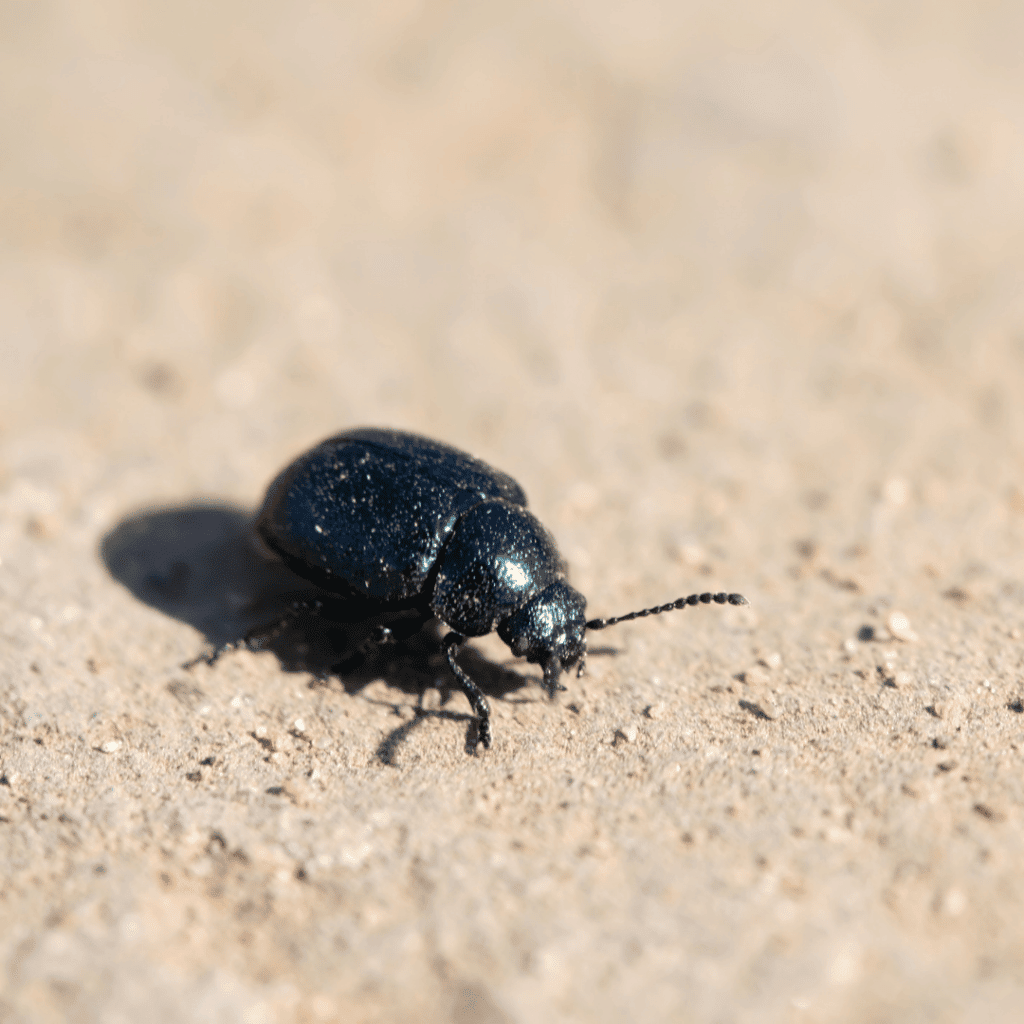
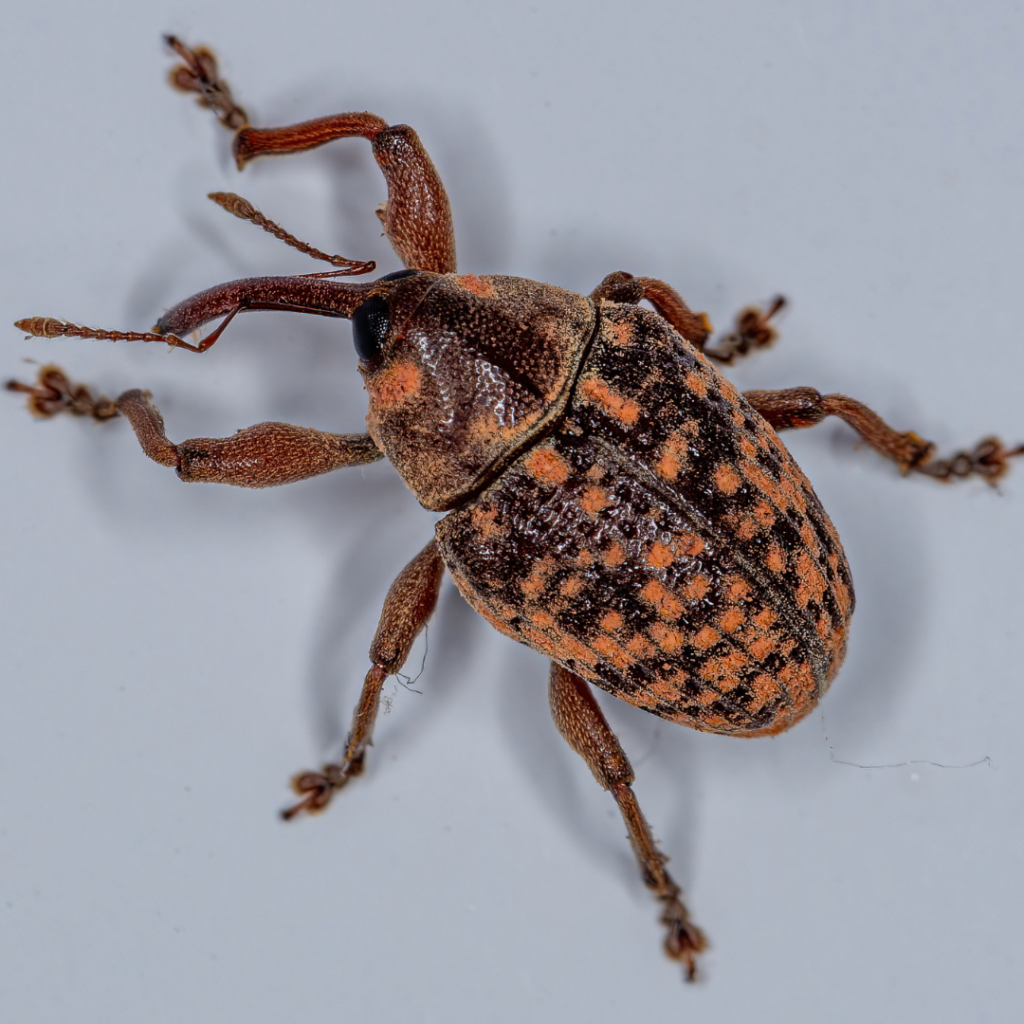
About Insectek’s Pest Control Services
Insectek offers home or business services for all your beetle pest control needs. Our experienced team of pest control professionals can answer any questions you may have about our pest control services, methods, and products.
Reach out today to get a free quote estimate and to learn more about our treatment plans and how we can serve you.
About Us
Insectek is a locally owned and operated pest control company, serving the Metropolitan Phoenix, Scottsdale, Glendale, Mesa, Tempe, Chandler, and Gilbert areas. With two decades of combined experience, we know a thing or two about the rodents and insects you fear creeping into your home.
Frequently Asked Questions
How do I know what kind of pest control service I need?
At Insectek we employ the highest moral and ethical standards for treatments, and therefore we do not recommend anything our customers do not need. Instead we focus on understanding the pest activity and pest tolerance of a client before making a recommendation. As your locally owned, operated and vested pest control exterminator experts, we believe earning your business based on what you need, and not what we want to try and sell you instead, will keep your loyalty, trust and business for years to come. Try out our recommendation app below to find out what kind of service is best for you.
Why do I still see bugs here and there when I have an exterminator service?
Insects have been roaming the earth for millions of years and therefore have a tremendous advantage on us humans. They have mastered the art of staying alive under harsh conditions, and are very adept at making sure their offspring do too. The pest control products that are available to professionals, like the Phoenix pest control exterminators at Insectek, have to balance the important task of eliminating as many pests as possible—while at the same time making sure they are safe for you, your family and of course your pets. Therefore, the exterminator team at Insectek Pest Solutions utilizes the best and safest products available, but in most cases cannot treat every single pest with one pass of the wand.
Are the products your exterminator uses safe for my family and pets?
The products on the market our exterminator technicians use in your home undergo rigorous research, development and testing first at the manufacturer level, then at the Environmental Protection Agency (EPA), and finally, in many cases through the State Department of Agriculture. Even with this multiple layer system it is important to have an educated understanding of, and conservative respect for the pest control products that are applied in and around your home. In most cases, a person or pet should stay out the treated area until the pest control solution is dry. Our Phoenix pest control and exterminator team will provide you with a detailed service report that states the name of each product used, as well as where it was applied. If you ever have any questions about a specific product we used, please reach out to us so that labels and material data safety sheets can be provided.
What is considered a “green” pest control treatment?
A green or organic pest control treatment is any treatment that uses a naturally occurring, non-synthetically altered or enhanced pesticide. These products are usually botanical, and they have proven to be quite effective overall. However, they do sometimes lack the residual power of synthetic versions that have been created by scientists in laboratories.
What are the most dangerous pests in Arizona?
There are many dangerous pests in Arizona that not only cause painful bites and stings, but also that can pass on dangerous diseases. These pests include scorpions, black widows, brown recluse spider, ticks, fleas, assassin bugs and rodents. The Phoenix pest control exterminator team at Insectek is very knowledgeable and experienced where these pests, and many others indigenous to Arizona are concerned.

Pest Control and Removal Services
Our team works to protect Arizonan homes and businesses from daily nuisances to the most destructive pests, including:
Related Articles
Instant Pest Removal Now!
Receive an instant pest removal and pest control quote now!




